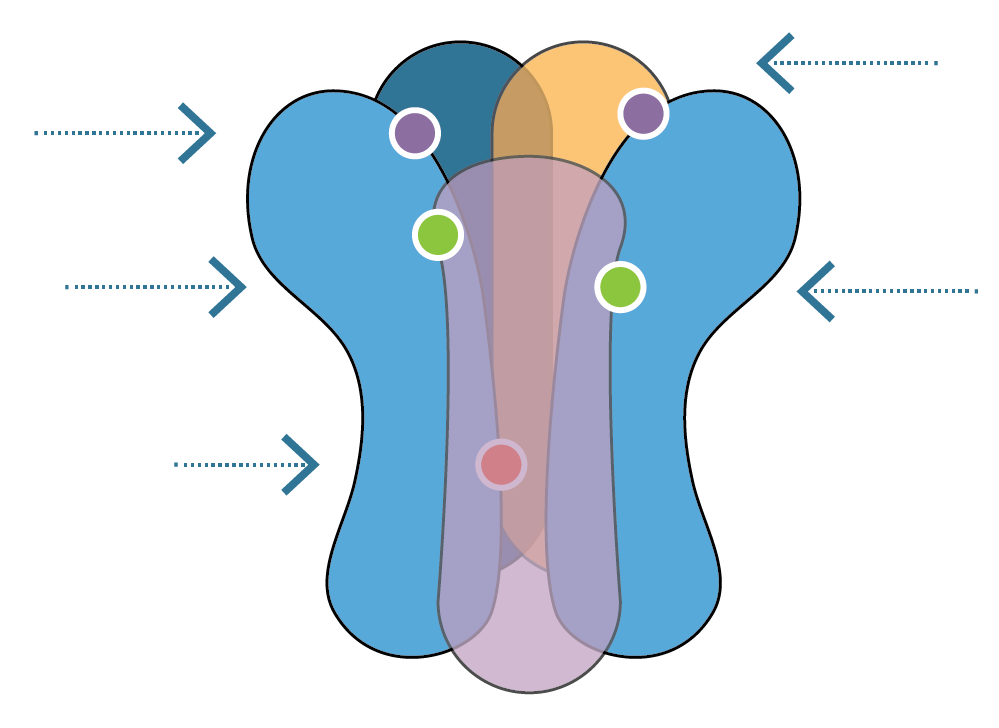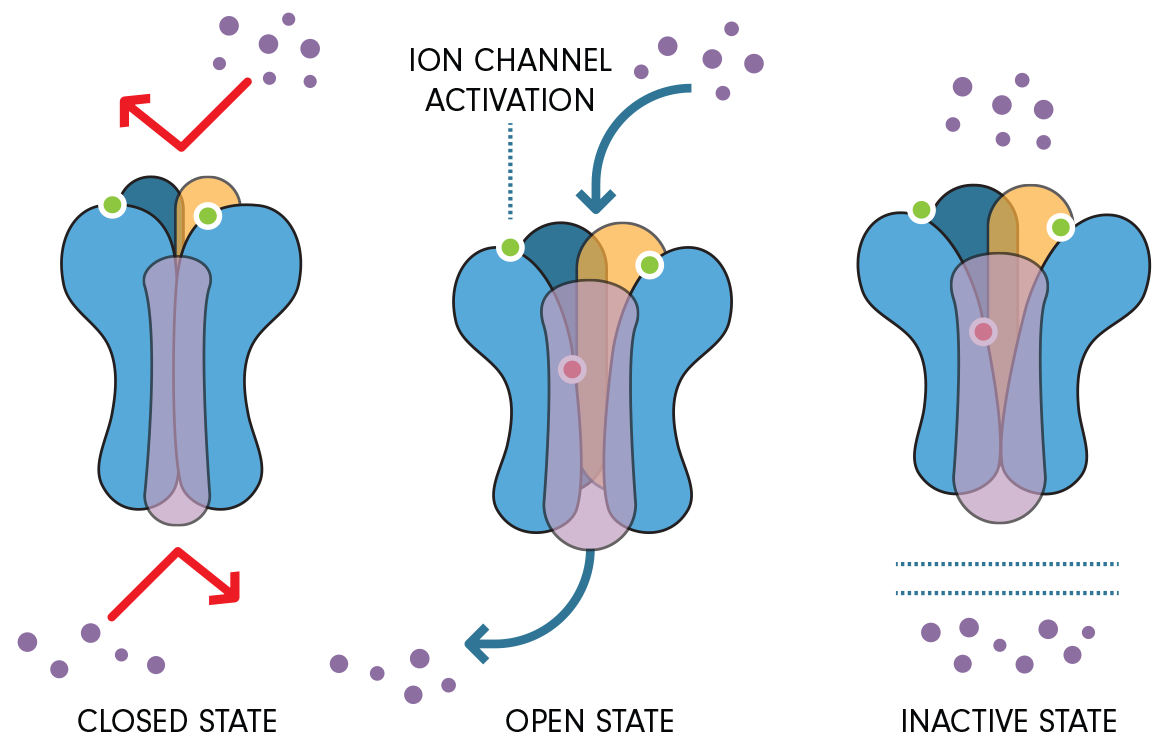We are a leader in the discovery of highly specific ion channel modulators, and several members of our scientific team have been pioneers in the field for more than 20 years.
We have leveraged our expertise and our proprietary methods to design a robust ion channel drug discovery engine and generate a library now consisting of more than 20,000 proprietary molecules targeting various ion channels.
What is an ion channel?
Ion channels are critical to many functions including the activity of muscles and nerves. They are used to move charged molecules like sodium or calcium into or out of a cell. Ion channel modulation is a validated approach to treating disease and has been used in medicines for diabetes, hypertension, epilepsy and more. Yet targeting ion channels is so difficult that an estimated 80% of them have yet to be accessed.
What makes ion channels hard to target?
It is difficult to design a drug that will bind to and modulate the activity of an ion channel because ion channels are very different from one another, and they are constantly changing properties. They might be made of as few as two subunits or as many as five. Sometimes the subunits repeat but more often each one is different. Sometimes the channels are open, and sometimes they are closed or inactivated.
MULTIPLE BINDING TYPES

DIVERSE SUBTYPE POPULATION

Unlike traditional small molecule targets such as kinases, which share significant structural similarities, ion channels are substantially more heterogeneous
What makes Saniona’s approach unique?
Our proprietary ion channel drug discovery engine draws on our expertise in assay design, electrophysiological approaches, advanced imaging methodology, and various other proprietary techniques, databases and methods. We have leveraged our expertise to generate a library now consisting of more than 20,000 proprietary molecules targeting various ion channels.
We have engineered highly selective, subtype-specific, state-dependent ion channel modulators and inhibitors.

The Integrated Ion Channel Drug Discovery Engine
CHEMICAL DESIGN & SYNTHESIS
- Combinational approaches
- Molecular modeling
PRECISION BIOLOGY
- Electrophysiology
- Recombinant and primary cells
- Cell and network based activity
- High-throughput screening
IN VIVO STABILITY & DISTRIBUTION
Pharmacokinetics
Compound and metabolite identification
Routes of excretion
TARGET ENGAGEMENT & TRANSLATION
- PK/PD modelling
- In vivo/ex vivo receptor occupancy
IN VIVO PHARMACOLOGY & DISEASE BIOLOGY
Pharmacological specificity
Proof of Concept in animals
Assessment of efficacy and adverse effects
Disease models